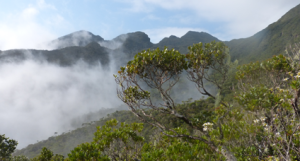Special Report: Madagascar – a highly endangered hotspot of biodiversity
 Professor Eberhard Fischer from the University of Koblenz-Landau, Germany, highlights the importance of Madagascar as a laboratory for studying evolution.Measuring over 587,000km2, Madagascar is the fourth largest island in the world. The first humans probably arrived there around 2,000 years ago from Indonesia, and the French naturalist Philibert Commerson (1727-1773) described Madagascar as the real Promised Land for the naturalist.
Professor Eberhard Fischer from the University of Koblenz-Landau, Germany, highlights the importance of Madagascar as a laboratory for studying evolution.Measuring over 587,000km2, Madagascar is the fourth largest island in the world. The first humans probably arrived there around 2,000 years ago from Indonesia, and the French naturalist Philibert Commerson (1727-1773) described Madagascar as the real Promised Land for the naturalist.
The rate of endemism allows us to assess the biodiversity of a region, and Madagascar is famous for its unique and exceptional biodiversity. For plants, 90% of the 14,000 known species from Madagascar are endemic, i.e. they exist nowhere else in the world, and even five plant families are endemic. For animals, the rate may be even higher and is estimated to be 95%.
The Sarcolaenaceae are one of these five endemic plant families comprising ten genera with 68 species (Ramananjanahary et al. 2010, Missouri Botanical Garden Madagascar Research and Conservation Program). Surprisingly, 29 species have been described within the last ten years.
Most impressive is the recent high number of new discoveries even in animal and plant groups that have been considered to be well known. As an example, the endemic lemurs, particularly the number of mouse lemurs (Microcebus), has risen from two to 23 since 1993 (e.g. Olivier et al. 2007, Molecular Phylogenetics and Evolution 43: 309-327 – three new mouse lemurs from NW Madagascar; Louis et al. 2008, Primate Conservation 23:19-38 – two species from N Madagascar; Radespiel et al. 2008, American Journal of Primatology 70: 1033-1046 – two new species; Rasoloarison et al. 2013, International Journal of Primatology 34: 455-469 – two species). The most recent discoveries are three new species described by Hotaling et al. (2016, Molecular Ecology doi:10.1111/mec.13604). Similar patterns are found among the frogs where Vietes et al. (2009, PNAS 106: 8267-8272) could increase the species number by DNA-analysis from 244 to 373 and up again to 465 species. Wollenberg et al. (2008, Evolution 62: 1890-1907) showed that pattern of endemism and species richness in Malagasy cophyline frogs support a key role of mountains for speciation (Fig. 1).
Within plants, the genus Impatiens L. (Balsaminaceae) represents the most species-rich genus in Madagascar, followed by Diospyros L. with nearly 250 species and Bulbophyllum Petit-Thouars with 203 species (Tropicos.org.Missouri Botanical Garden 10 Jun 2015). During the revision of Balsaminaceae, it became apparent that we are far from a satisfactory knowledge of the diversity of Impatiens in Madagascar.
For Madagascar, 110 species were known, mainly described by the French botanists Perrier de la Bâthie and Jean Henri Humbert. During a revision of the Balsaminaceae, numerous new species were discovered – of which several have already been described (Fischer and Rahelivololona 2002, Adansonia 24: 271-291; 2004, Adansonia 26: 37-52, 93-95; 2007, Adansonia 29: 317-332, 613-616; 2015, Phytotaxa 239: 183-189, 213-222; 2016, Phytotaxa 244: 191-195; and Fischer et al. 2003, Adansonia 25: 17-31). The species number known at present is 273, but during recent field trips to NW and NE Madagascar, numerous undescribed species were discovered. Thus the real species number of Impatiens is estimated at around 300. Most taxa have a very restricted distribution and are often just confined to a single mountain (Figs. 2, 3). Molecular data suggest that Madagascar was only once colonised during the last one or two million years with an ancestor that probably came from southeast Africa. The huge diversity most probably evolved from just that one ancestor.
The biodiversity of Madagascar is thus crucial for the understanding of evolutionary processes. However, during a period of political instability, the biodiversity, even in national parks, was threatened by illegal logging. Since 2014, the situation has improved – at least in the protected areas. Outside these areas, logging and deforestation for shifting cultivation, fuel-wood gathering and cattle ranching are still major threats to the unique biodiversity. It must be ensured by the government of Madagascar, together with the international community, that this unique and confined biodiversity will be preserved for the future.
![]() Professor Dr Eberhard Fischer
Professor Dr Eberhard Fischer
Botany and Biodiversity
Department of Biology, Institute for Integrated Natural Sciences
University of Koblenz-Landau, Campus Koblenz
+49 (0)2612872224
